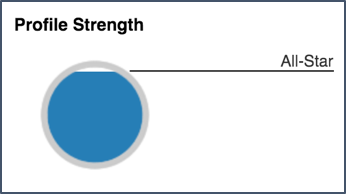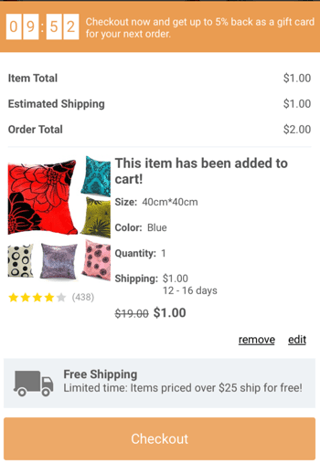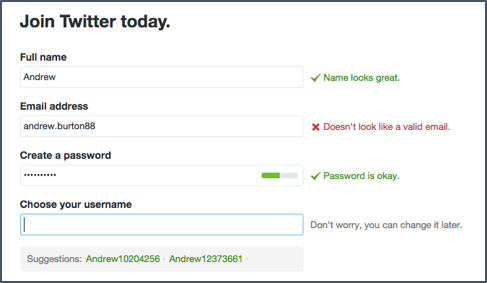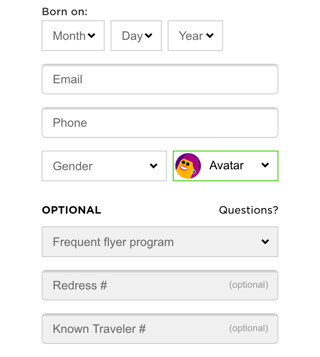
Creating an effective checkout experience is hard to do. Several of our top clients have come to us to better understand why many of their users drop-off when they are in the checkout workflow. Despite major gains in usability, the average checkout abandonment rate still hovers between 60 – 70%.
The checkout experience is often ignored by user experience designers beyond addressing usability issues like in-line validation and descriptive error messages. The reality is that getting users to commit to a purchase and complete a checkout workflow is hard work!
Our user research studies have revealed that there are opportunities to engage the user not only during the shopping experience, but at the critical moments when they are deciding whether to just browse your products or commit to buying on your website.
Tipping the scales towards a successful checkout

A user that has already invested time and energy to find a product that they want to buy is at least partially committed to buying the product on your website. Gamification can provide just enough of an emotional engagement to persuade a user to follow through.
As humans, we like to:
- feel validated
- be challenged
- be rewarded
- be surprised
- feel anticipation
As it turns out, games fulfill all of these emotional needs and provide a source for fun and engagement.
All e-commerce websites contain the same basic elements that are needed to complete a checkout workflow. Each part of the workflow can be optimized, sometimes in subtle ways to encourage and engage users each step of the way.
Getting past the shopping cart
The shopping cart is the first stop in a checkout workflow. Users make a soft commitment to buying, but are most susceptible to bailing out at this point. The key is to help the user feel good about the items that they’ve added to their cart. Users want to feel confident that they have taken the right steps to find the best product for their needs.
Many people think that dopamine is released when the brain receives a reward, but dopamine is actually released in anticipation of a reward. This feeling of anticipation significantly drops off after a user has selected their items and added them to their shopping cart.
One approach to sustain this feeling of excitement and anticipation is to gamify the actions that the user has taken related to evaluating products that they are considering up until the point of adding the product to their cart.
One example is the concept of “savvy shopper” points. Users are awarded points each time they:
- Click on an item on a product listing page
- Select different photos on a product display page
- Click on customer reviews
- Use product comparison features
Users see the total number of points earned when they go to the shopping cart before checking out. To increase the challenge, consider displaying the number of savvy shopper points earned by other fellow shoppers. This introduces an element of competition and also provides social proof that other individuals like themselves also take shopping seriously!
 For example, outside of e-commerce, LinkedIn has gamifyed their profile editor to encourage users to add more content to their profile. They provide a score based on how complete your profile is. You can increase your score by adding new information to reach a new status level.
For example, outside of e-commerce, LinkedIn has gamifyed their profile editor to encourage users to add more content to their profile. They provide a score based on how complete your profile is. You can increase your score by adding new information to reach a new status level.
Adding challenges can motivate users to take action while also providing a reward.

The Wish mobile app provides a countdown timer to encourage users to check out with an item before the timer runs out. The reward is a 5% discount, which is likely to be just enough to encourage someone on the fence to commit to the purchase.
Leveling up by signing up
Web analytics have shown that a significant portion of users drop off when they arrive at the account creation and login screen. To encourage users to get past this hurdle we need to reframe the sign up experience.
One option is to rebrand signing in as an express option; Making it almost feel like they are taking a shortcut in the checkout line.
Users will feel empowered that they are getting to the next stage of checking out faster.
 For extra motivation, you can also reward your users for successfully creating an account with a small prize. The Wish mobile app allows those who complete the sign up process to select from an assortment of small gifts.
For extra motivation, you can also reward your users for successfully creating an account with a small prize. The Wish mobile app allows those who complete the sign up process to select from an assortment of small gifts.
Offering something for free encourages the feeling of reciprocation where the user is more likely to commit because you are giving them something first. The deeper the user gets into the checkout workflow, the more likely they are to commit to completing their purchase.

Twitter provides both useful feedback and combines it with fun messaging. It also introduces an element of challenge to encourage you to pick a strong password while creating an account.
 Virgin America subtly integrates an element of surprise by allowing users to select a quirky avatar to be associated with their flight.
Virgin America subtly integrates an element of surprise by allowing users to select a quirky avatar to be associated with their flight.
Making the tedious task of completing forms more fun will help to keep your users motivated and encourage them to finish the process.
Winning the game: acknowledgement and excitement
Winning a game should provide a sense of completeness and accomplishment. Most checkout confirmation screens are highly anticlimactic.


Marshall Fridge wants you to feel excited about the product that you just ordered and to share your successful checkout experience with the world.
Gamification should not conflict with usability
Adding gamification elements should not interfere with your users’ primary task: complete the checkout experience quickly and easily. Anything that you include should NOT:
- Introduce anything that might confuse the user
- Make the experience, too, challenging
- Add significant time or effort
- Be required to complete the checkout process
Gamification elements can help to add to usability through clear indicators of progress and success.
Gamification methods must be tested and refined with actual users
 Integrating elements designed to engage with your users can be tricky and has the potential to backfire if you don’t do it correctly. Certain gamification methods may work extremely well with certain audiences, and may be a complete flop with others. You need to perform user experience testing as part of an iterative design process to identify early on what is working and what isn’t.
Integrating elements designed to engage with your users can be tricky and has the potential to backfire if you don’t do it correctly. Certain gamification methods may work extremely well with certain audiences, and may be a complete flop with others. You need to perform user experience testing as part of an iterative design process to identify early on what is working and what isn’t.
Evaluating the true effectiveness of gamification in a user experience test requires a skilled moderator. Participants will have a tendency to satisfice, which may produce false positives for your gamifyed experience. There is also the potential for a researcher to inadvertently bias a participant through leading questions that may impact your results.
Do you think you are a good moderator? Find out what type of moderator matches your personality and ways to improve your moderating skills by attending our upcoming webinar “So You Think You Can Moderate”.
Key takeaways
- Engage your users throughout the checkout process using the emotional appeal of gamification.
- Adding challenges can motivate users to take action while also providing a reward.
- Be careful that your gamified experience does not introduce usability issues.
- Make sure to test all gamification elements with your target audience.
READ MORE: Top 10 Considerations When Designing mCommerce Experiences for Millenials, The New "Buy" Button and How It's Affecting eCommerce Usability, Is Panera Leading the Way for Restaurants With Their In-Store Experience?







Comments
Add Comment